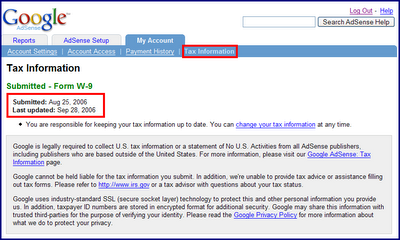We've heard it time and time again: as publishers, you want to give your users a relevant search experience on your websites. You want the power of Google search, and you want to make it your own. And then, of course, you want to make money from this search engine, not spend time and money building it. Well, here's news you can use -- now you can do all this with Google's ...
Read More
We've heard it time and time again: as publishers, you want to give your users a relevant search experience on your websites. You want the power of Google search, and you want to make it your own. And then, of course, you want to make money from this search engine, not spend time and money building it. Well, here's news you can use -- now you can do all this with Google's
Custom Search Engine (CSE).
With CSE, you can create a highly customized and (free) tailored search experience for your users that reflects your knowledge and expertise. You place this search engine on your site and, if you've got an
AdSense for search account, you can link your CSE to it and make money from the resulting traffic. In a few simple steps you can create a CSE that looks and feels like your own, prioritizes or restricts content based on what you specify, as well as open your search engine index to trusted members of your community so they can contribute to its comprehensiveness and relevance.
Here's an example from
Macworld. In the first screenshot, you'll notice a search box in the upper righthand corner of the page. After performing a search with the query [macbook], the search results page shown in the second screenshot appears. The search results are integrated smoothly with the site layout and the Macworld publisher earns revenue from clicks on the ads in the "Ads By Google" section.


It's easy to build a CSE -- no Ph.D. in computer science required. Here's how it works:
- Visit http://www.google.com/coop/cse/ and select the websites you'd like to include in your search index.
- Then choose to restrict search results to include only those pages and sites, or you can give those pages and sites higher priority and ranking within the larger Google index when people search on your search engine.
- From the CSE site, you can generate the code to place on your site and make the search engine, through an IFRAME, look and feel like your own. If you choose, you can easily link to your current AdSense account so you have a centralized place to manage your Google AdSense relationships.
- Last but certainly not least, you can invite members of your community to contribute to your search engine index, in real time. Simply enter email addresses of people you'd like to contribute and an invitation along with Google Marker will be sent to your invitees.
You can check out a few more CSEs in action by visiting our
featured examples page. You'll see some created by industry experts, bloggers, educators and techies. We're continuing to add
customization and advanced features to the CSE too. We hope you'll try it out and
let us know what you think.
Posted by Jennifer Hyman - CSE Product Marketing Manager






